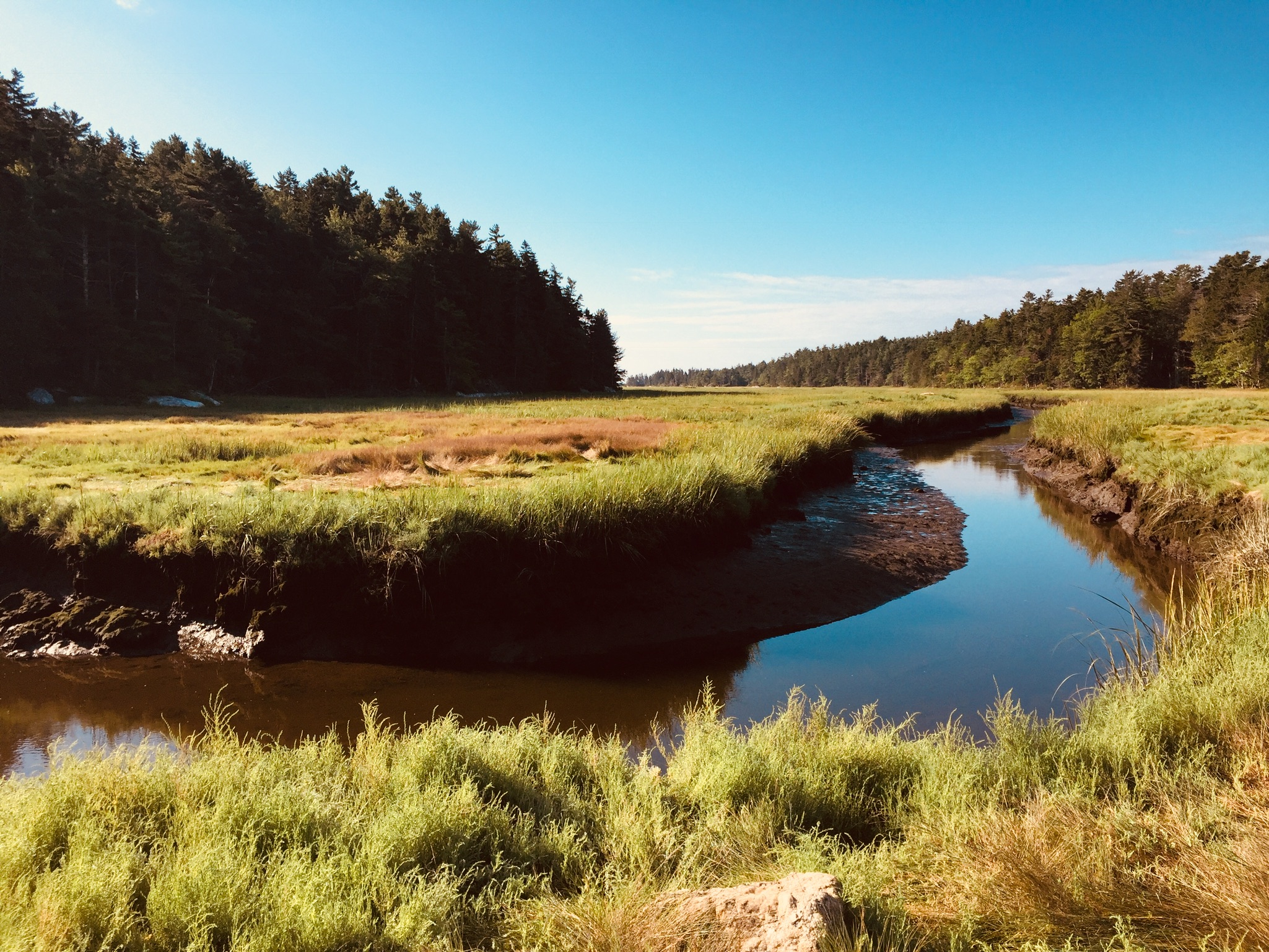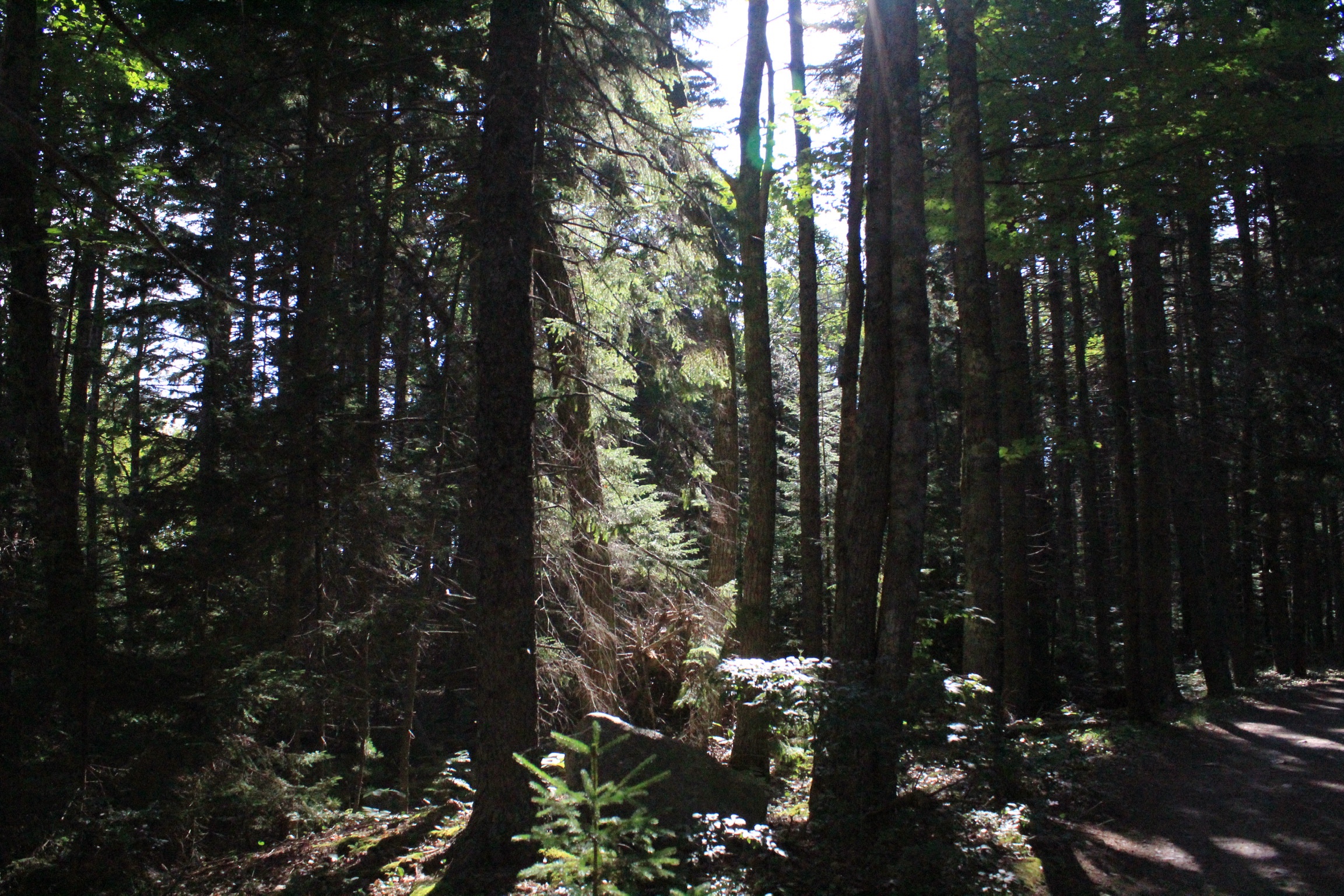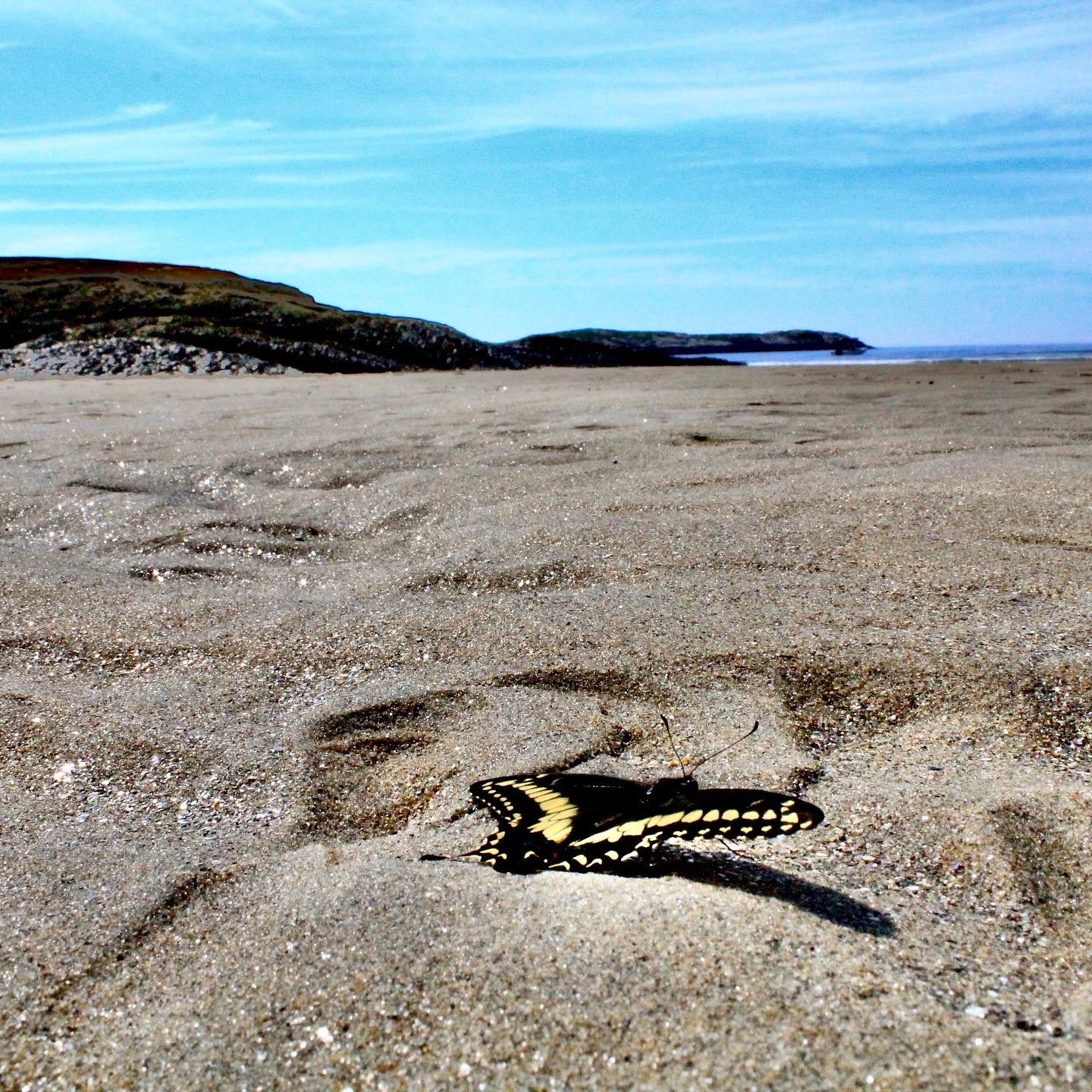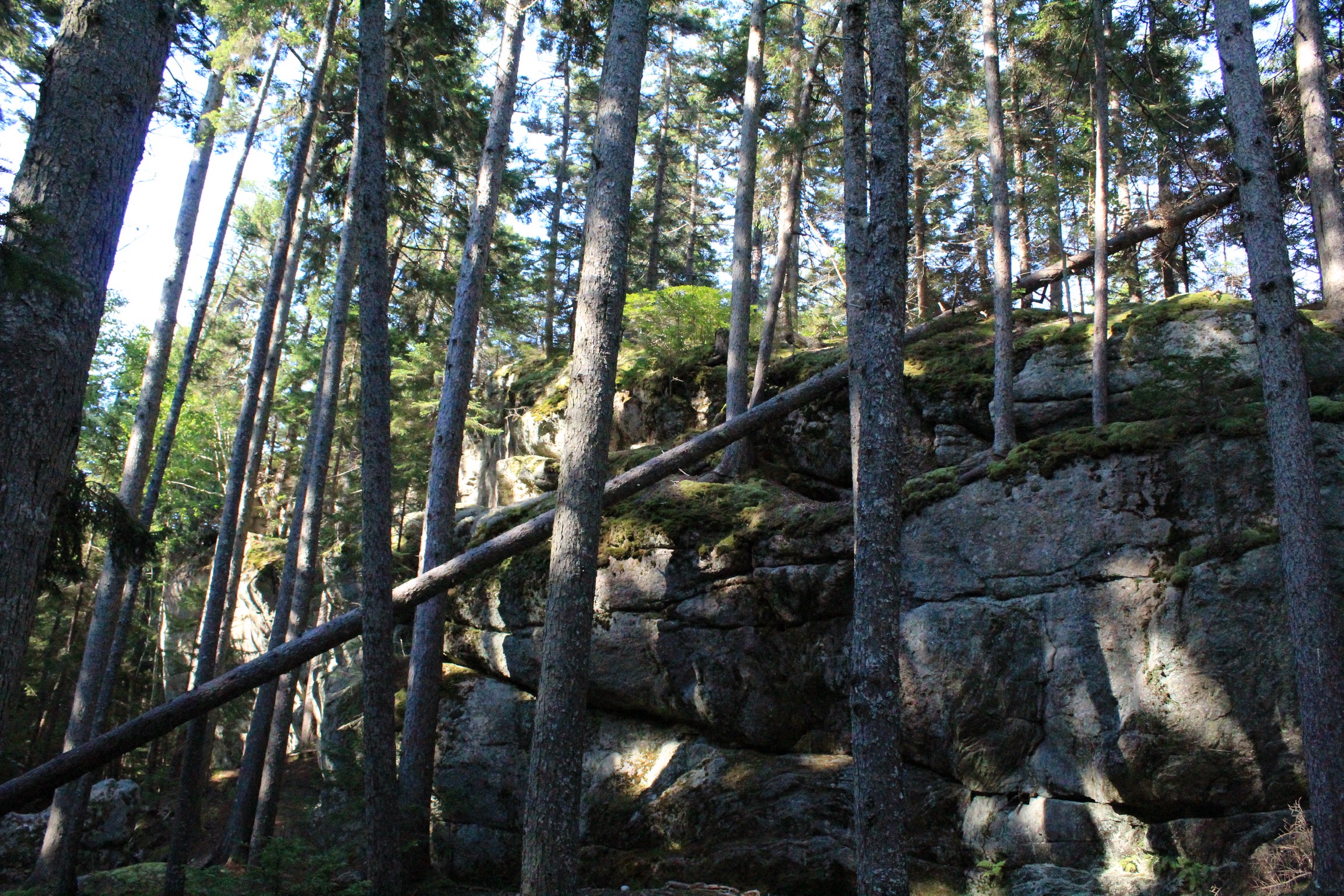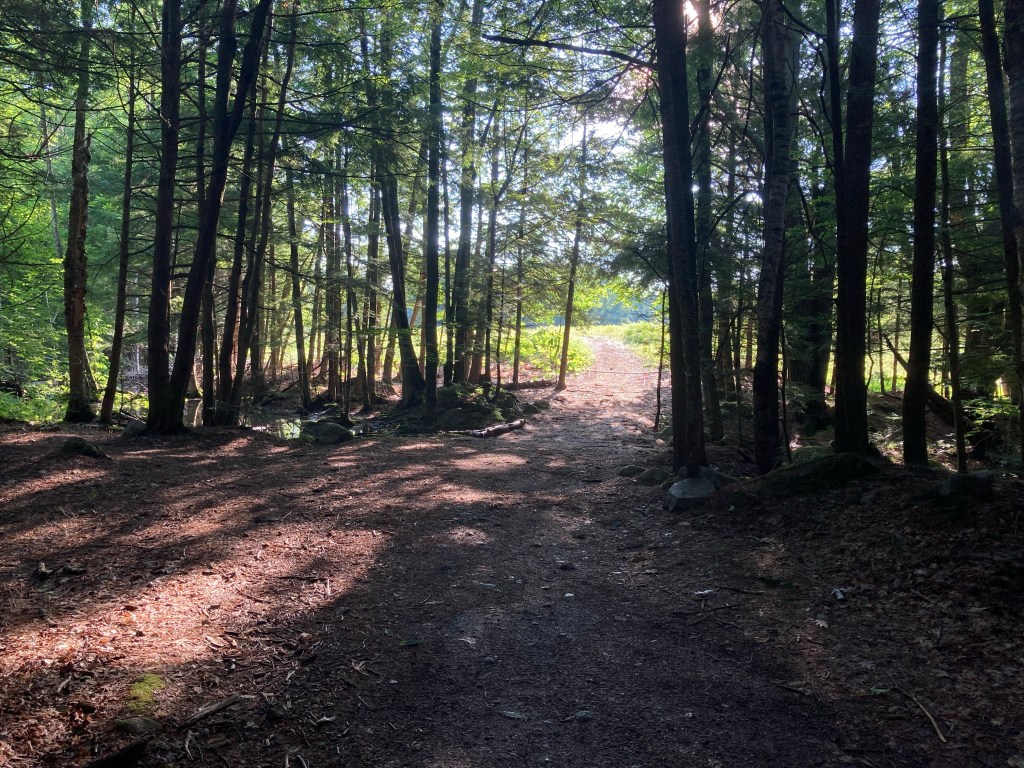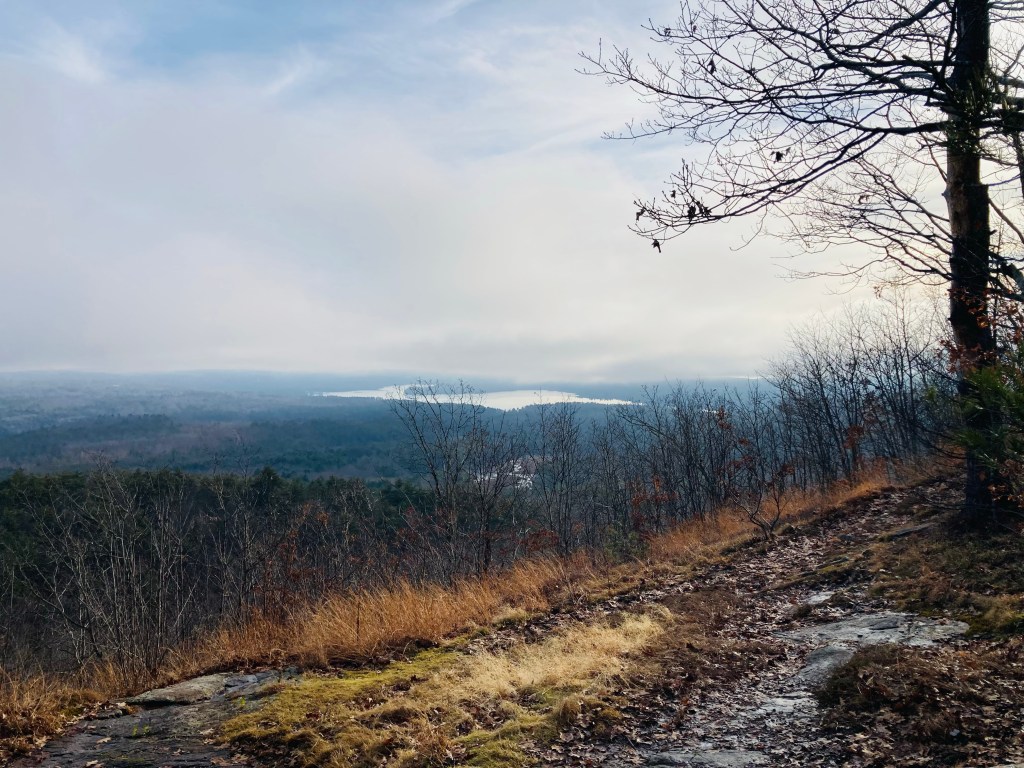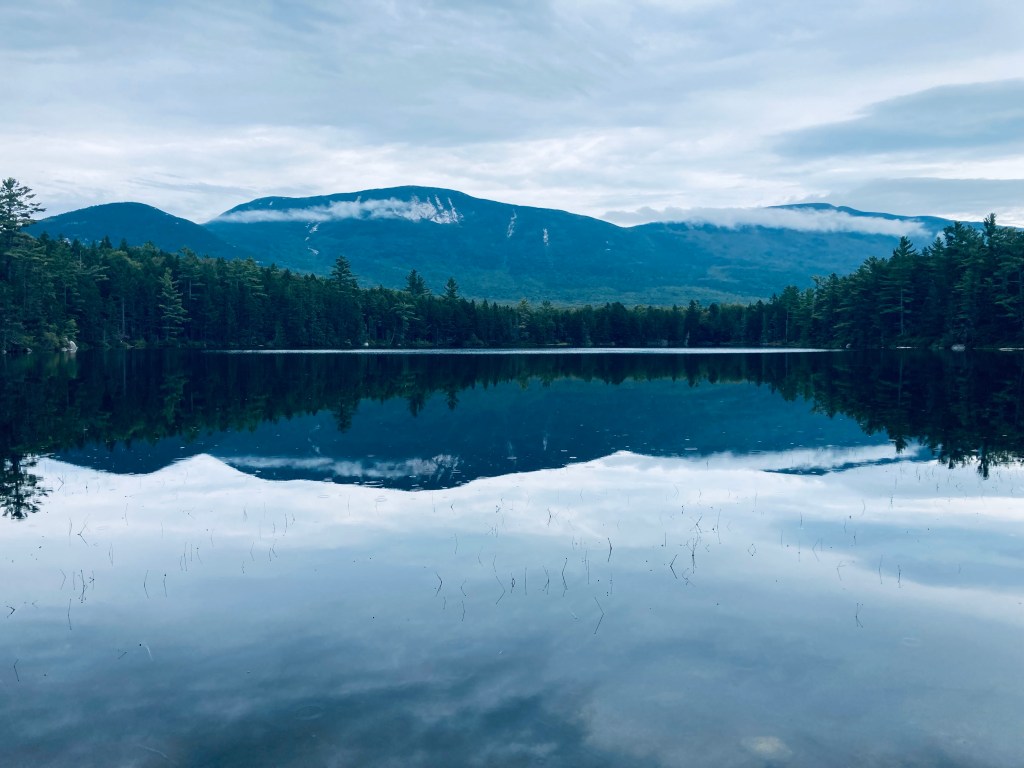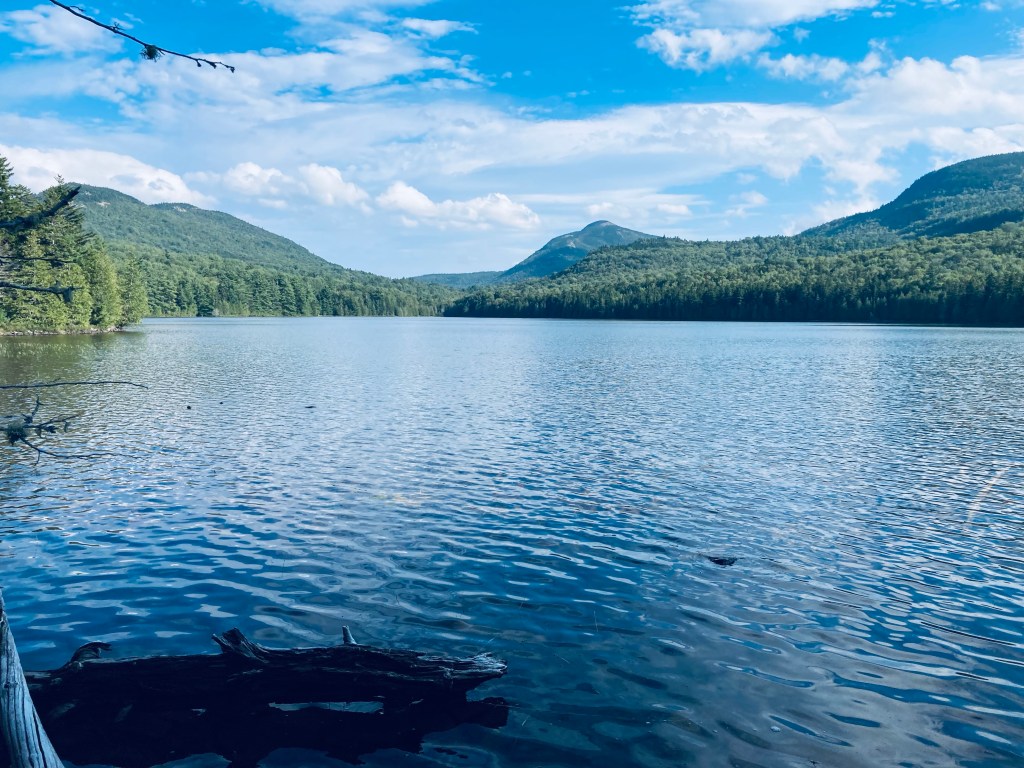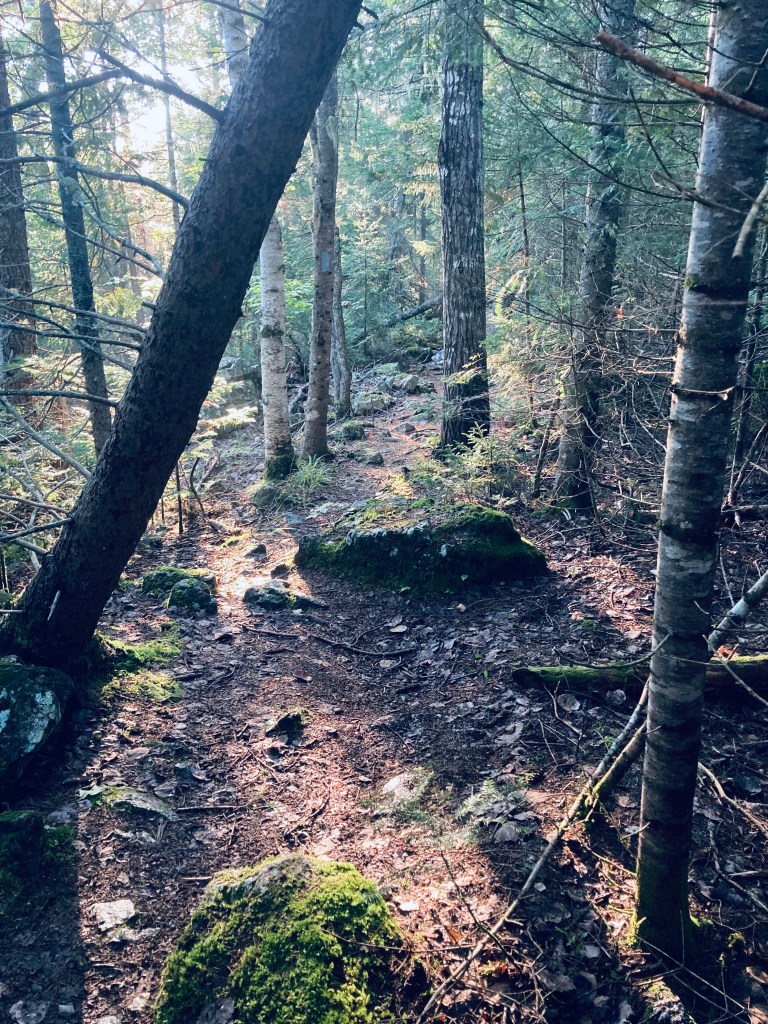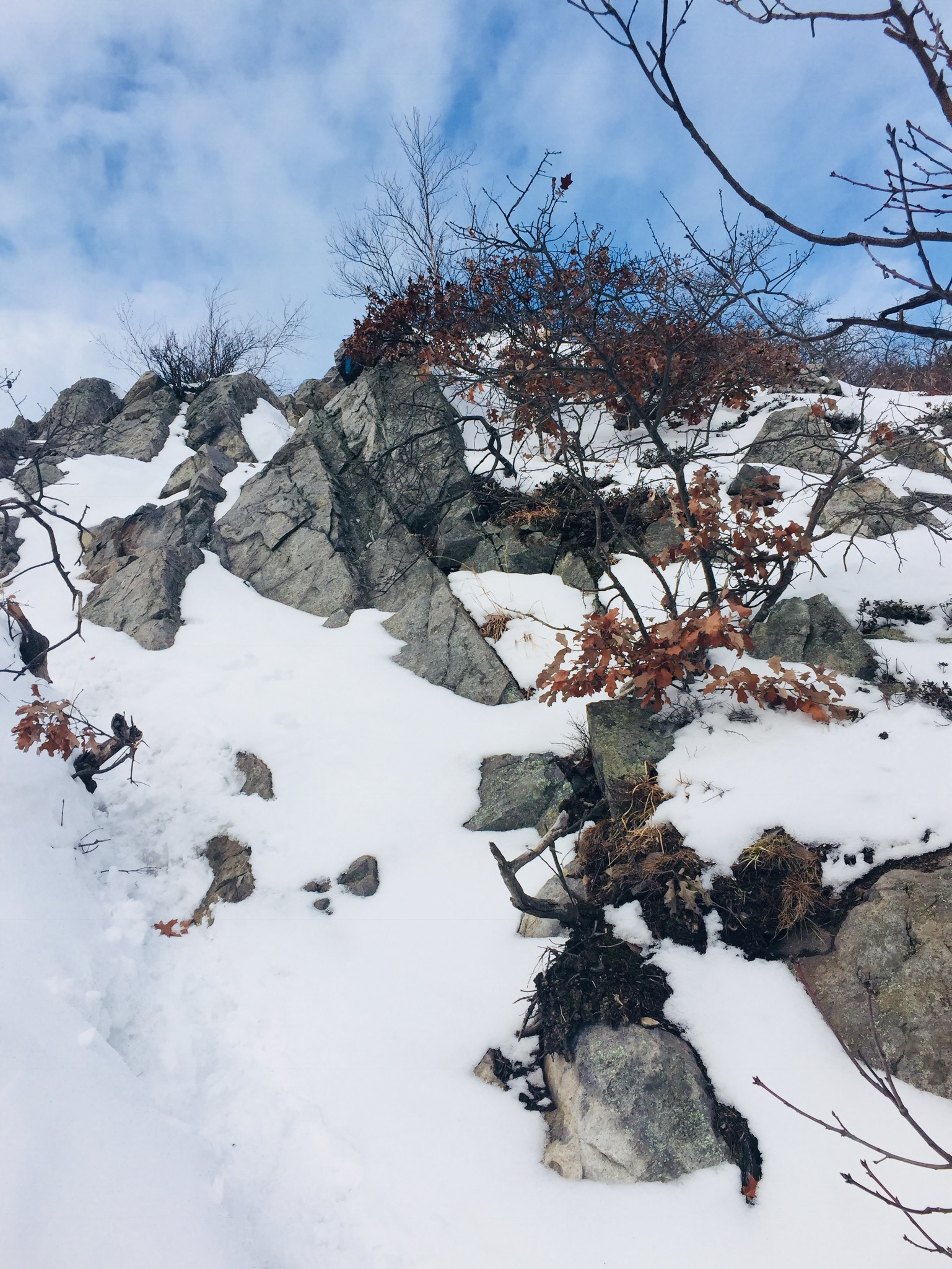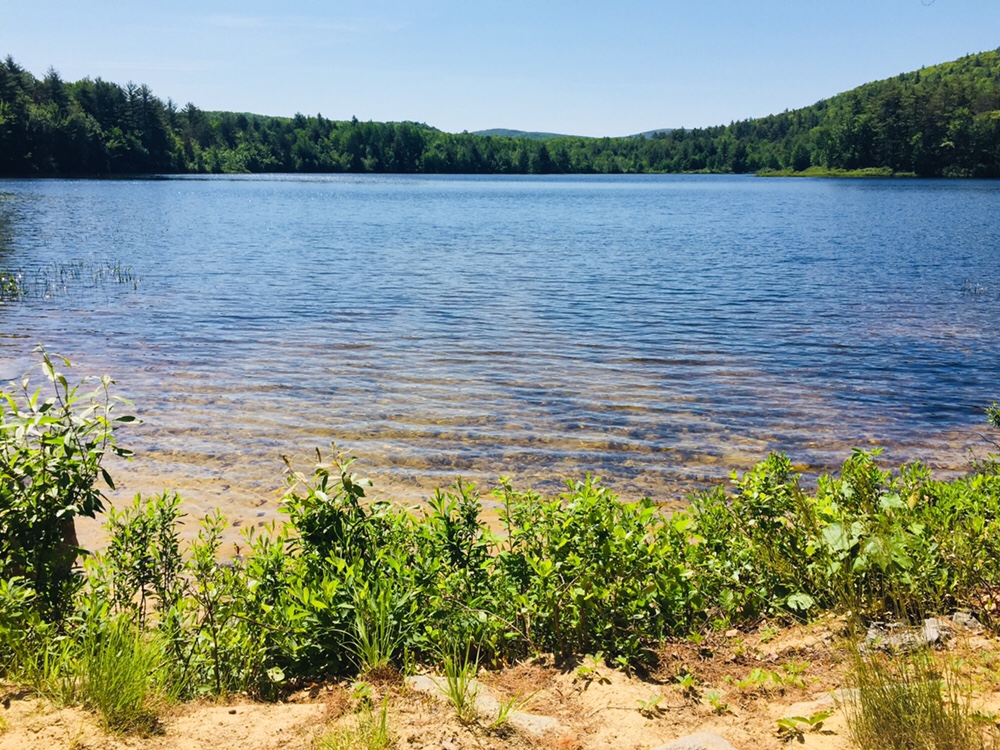
The Crooked River Forest in Harrison is comprised of two forest parcels protected and maintained by the Loon Echo Land Trust (LELT). On a mild December day, I explored the 334 acre Intervale Preserve section, which is open year-round, with the parking area off Scribners Mills Road plowed in the winter. As of November 2023, it is only accessible from the Harrison side of the river (Maple Ridge Road), as the state of Maine permanently closed the Scribners Mill bridge over the Crooked River in Otisfield (“structurally unsound and unsafe for use”). The river and streams were still running high from the large winter storm a little over a week prior. I had the parking lot to myself, where there was a kiosk with a large trail map, and pamphlets with trail maps and info to carry along the hike. Maps and info are also available from LELT here.

I started on the Intervale Trail (.62 mile total length), and almost immediately heard the loud honking call of a great blue heron, with identity confirmed when it lumbered out of a tree into flight at my approach. Then along the short straightaway through the forest to an open area, I heard the chirping of a Red Crossbill. At this opening, the Evergreen Trail (1.1 mile total length) splits off to the right, and I continued left towards the Crooked River on the Intervale Trail. The trail is wide and flat, marked by red diamond-shaped placards with a black center, and moves slowly downhill toward the river. I passed over a brook flowing underneath the trail through a culvert ,with the banks covered in a recent overflow of mud and clay, yielding to a straight path through very evenly planted evergreens.
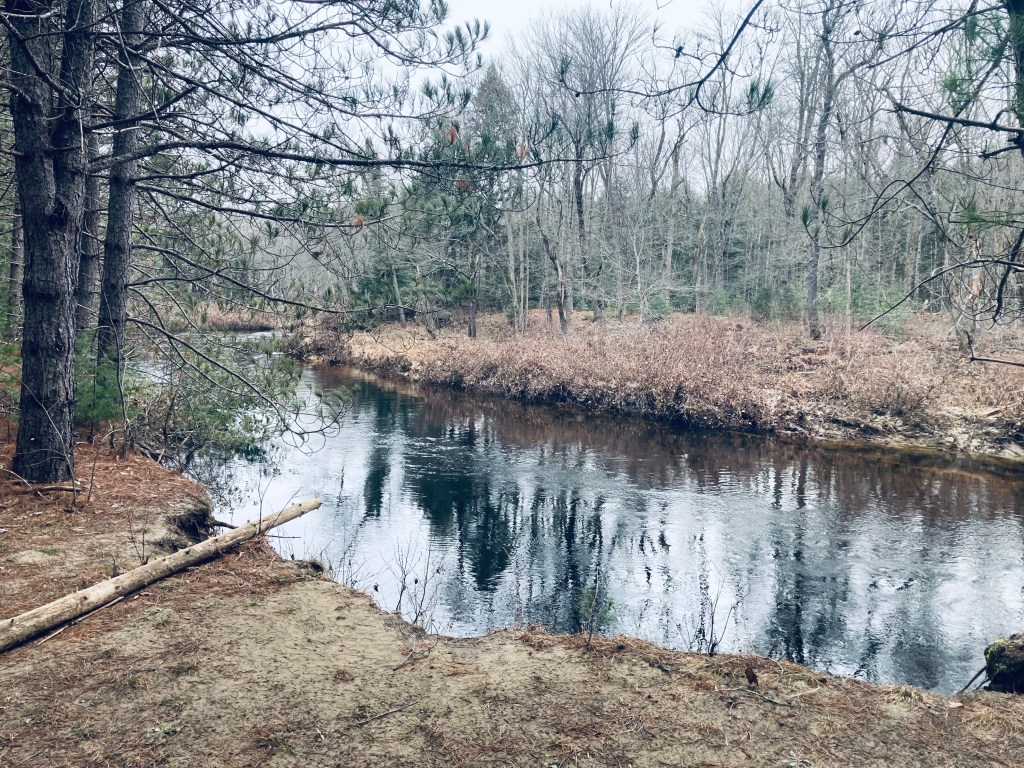
Here, I disturbed some deer close to a pleasant curve in the Crooked River, which quickly became visible through a break in the trees. There were little, bubbling rapids and rocks, and trees spaced widely enough to allow for a good place for a picnic. After a short walk of about twenty minutes from the trailhead, the Intervale Trail dead-ends here, unless there’s snow. In the winter, the Winter Snowshoe Trail (.6 miles) would make a loop back to the Evergreen Trail, but without the snow, it’s too overgrown. I doubled back to the trail intersection at the open area, and then took the Evergreen Trail separately. On both trails, I saw ample signs of wildlife, with sounds in the woods, deer hoofprints in the mud, and scat and grey fur along the trail from animal usage, or some life or death struggles. Black-capped Chickadee and Dark-eyed Junco flitted across the path, and I heard Red-breasted Nuthatch and Northern Cardinal in the surrounding forest.

The conifer-lined Evergreen Trail is true to its name, and crosses over several peaceful streams. In the wintertime, the trail is groomed for snowmobiles, so it might be a bit more difficult to share the road, depending on traffic. I reached the intersection with the Winter Snowshoe Trail and continued another .4 miles to where the Evergreen Trail ends abruptly in a clearing, with a wooden sign for notice. I turned around and heading back up this long, straight easy trail. My route was pleasant, a Y-shaped retracing of my steps totaling about 3.9 miles, and completed in a leisurely hour and 15 minutes or so. A more efficient snowshoe loop using the Evergreen, Intervale, and Winter Snowshoe Trails would be about 2 miles. In addition, a trail not listed on the map, marked with blue diamonds, is visible bisecting the Evergreen and Intervale Trails. According to the LELT land manager, this is another snowshoe/cross-country ski loop totaling about eight/tenths of a mile, and will be groomed (if there’s snow) by the snowmobile club. After the hike, the nearby Fluvial Brewing off Maple Ridge Road is a great place to grab a beer and snacks (check the hours first). Or, if heading towards Portland, The Good Life Market in Raymond is a perennial go-to for us.


